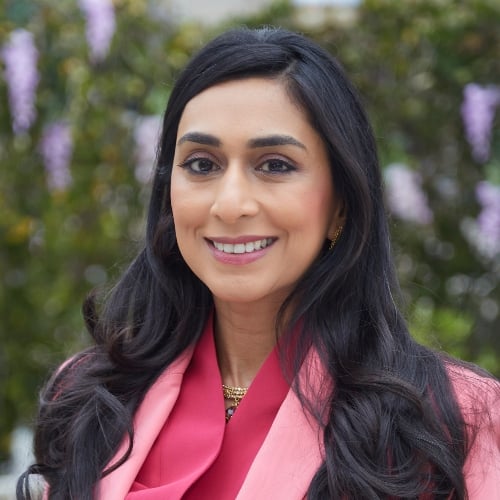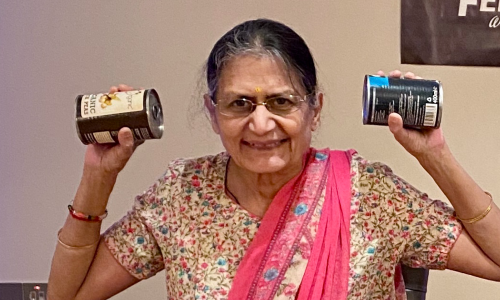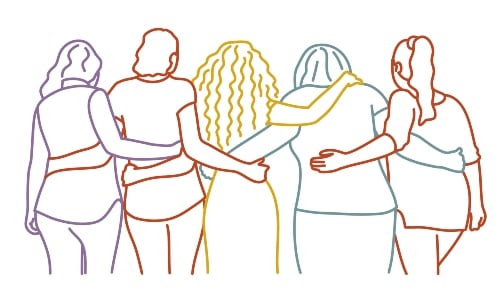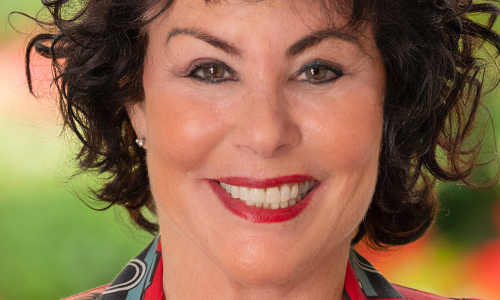Since beginning her own fitness journey in her mid-30s, personal trainer Lavina Mehta MBE has been on a mission to help people of all ages improve their mental and physical wellbeing.
“It’s about exercise for sanity not vanity,” Lavina says of her ethos. “Even just a minute of exercise is beneficial.”
But with her workout videos as a guide, Lavina’s clients and followers enjoy much more than a minute of exercise every day. The pandemic lockdowns inspired Lavina to begin filming and sharing structured routines that can be done at home, with her mother-in-law on hand to demonstrate the movements.
“I know a lot of older people who haven’t left the house for months, even to go for a walk,” Lavina explained when we spoke to her in early 2021. “But the free classes have created a virtual community to combat loneliness.”
Four years on, Lavina is determined to keep making an impact.

I want us to focus on our health span as well as our life span.
Long-term benefits
Following the pandemic, Lavina’s online programme has continued to go from strength to strength. “I’ve carried on the weekly Friday workouts with my mother-in-law, who’s now 77,” she says. “We go live on Zoom, and every session we’ve done since March 2020 has been saved on YouTube. There must be about 300 or 400 available. It’s a free resource and something I would love everyone to use.
“We get an array of people joining us,” continues Lavina. “There’s a lady who’s 100 and has Alzheimer’s, and there are care home residents that started doing the sessions during the pandemic and have continued with them. One couple in their 80s repeat the Friday workout again on a Tuesday – they’re probably doing more exercise than many people in their 30s and 40s who are stuck at their desk all day.”
Lavina’s eager to support those who are working office jobs to make time to move, too – and says that short exercises can be “a game changer for midlife and beyond”. “I’ve been promoting chair-based exercises that can be done while working at home or in the workplace,” she says. “The workouts are really very positive for every age.”
For those who attend her classes, no matter their age, the benefits are clear. “In the workouts, we always start with a breathing exercise to help combat stress, anxiety and worries,” continues Lavina. “I also try to explain a lot of the science about why building muscle is so key to our longevity and maintaining our independence.
“They’re feeling the benefit – I’ve had lots of people message me about how their mood and energy levels have improved, how they’ve reduced their cholesterol, lowered their blood pressure, reduced their joint pain, and even reversed their Type 2 diabetes. For me, that’s been the most rewarding part.”
Supporting South Asian communities
Lavina is particularly passionate about encouraging people from the South Asian community to be more active. She has led multiple workout sessions in Gujarati, a language with around 40 million speakers in India and 200,000 in the UK, and also emphasises the importance of representation. “When people see someone who looks like them doing exercise, it helps,” Lavina explains.
“Even when I qualified at the age of 40, there weren’t really any other South Asian women over the age of 40 I could see doing this – or at least no one on social media. Diabetes and heart disease are so rife in South Asian communities, so I think it’s really important for us to get messages about the benefits of exercise out there. I want us to focus on our health span as well as our life span.”
For Lavina, breaking taboos around women’s health is similarly vital. So much so that her recent book, The Feel Good Fix, is specifically designed to help women improve their health during perimenopause, menopause and beyond. “I’ve shared my own journey and am very open about my own perimenopause, and hitting the menopause at age 46,” she says. “But the cultural barriers are still there in terms of women’s health, especially in midlife. Many women are always looking after others, but I’m trying to reframe that - the healthier we are, the more able to we are to look after people around us.”

These exercises are free, they’re backed by science, and they’re quick and easy. It’s really never too late to start.
Removing barriers
Above all, Lavina says that the key to getting people of all ages moving more is making it accessible. One method she has is reframing workouts as ‘exercise snacks’: short bursts of activity that can be implemented throughout the day, and that can be added to existing habits – like balancing on one leg while brushing your teeth.
“These tiny bouts of movement can actually be as effective if not more effective than longer workouts if you do them regularly,” Lavina explains. “I think that’s so positive, because sometimes people are so busy that they put it off. Plus, you don’t have to have fancy gym equipment – you can just use tin cans or plastic bottles.
“It’s about breaking the barriers of cost, time and motivation. These exercises are free, they’re backed by science, and they’re quick and easy. It’s really never too late to start.”
Act Now, Age Better
In our latest campaign, we're encouraging everyone to move more for a better later life.






